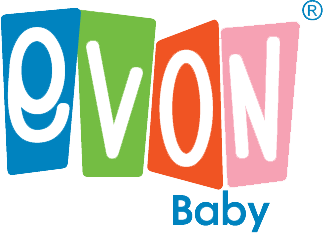Returning from Maternity Leave: What to Expect

What to expect when you go back to work after maternity leave
7 min. read
Returning to work after having a baby is an important transition that both you and your little one will make together. Aside from the physical changes that your body has undergone to create your beautiful baby, you’ll also experience new emotions around returning to work. We’ve created this guide to help ease that first separation from your baby.
We’ll look at what you can expect when going back to work after having a baby and how preparation can really help. If you plan on breastfeeding, we’ll also go over how you can continue feeding your baby breast milk even while you’re apart. And remember, if you have any remaining questions or concerns, always consult with a healthcare professional.
New emotional changes when returning to work after maternity leave
- Accept that you will miss your baby. Before returning to work after maternity leave, it’s important to acknowledge and accept the fact that you’ll miss your baby and he or she will miss you, too. This is perfectly normal and accepting it will make it easier to understand the different emotions you may go through.
- Enjoy extra time in the morning. Another adjustment you can make is blocking out extra time in the mornings to enjoy spending time with your baby. Plan ahead so that you have time to feed and connect with your baby before you leave for work.
- Bring a picture or video of your baby to work. It may be helpful to look at a video or a picture of your baby while you’re pumping at work. (But more on this and other pumping tips later!)
- Check in frequently with your child’s caregiver. Expect to make more phone calls and send more texts than before you had a baby. You’ll probably want to check in with your child’s caregiver throughout the day to make sure that everything’s running smoothly.
- Reconnect during breaks. If at all possible, try stopping back at daycare during your lunch break to feed your little one and enjoy that extra bonding time.
Ways that you can prepare in advance
One of the keys to transitioning back to work after maternity leave is preparation. From establishing a pumping routine to finding a caregiver for your baby and practicing bottle feeding, advanced preparation can help relieve unnecessary stress. Below are some of our tips to prepare as a new mom going back to work.
1. Choose the right caretaker
For many moms returning to work, one of the most important steps is finding the right caretaker for their baby. Knowing that you’ve hired a caretaker who you’re comfortable with and trust will make returning to work that much easier. Whether it be a friend, a family member, a daycare center, or a nanny, choose someone who both you and your baby will love.
2. Know your rights
If you’re feeling a bit nervous about going back to work after having a baby and pumping in the office, rest assured that the law is on your side. Under the Patient Protection and Affordable Care Act, most employers are obliged to offer you adequate break times to pump. They’re also compelled to give you access to a place other than the bathroom to comfortably, safely, and privately pump your milk. Consider speaking with your HR department before returning to work to find out your company’s policies.
3. Communicate with your boss
Communication is key for you to feel comfortable before returning to work and to keep your employer informed on what they can expect from your return. Speak with your employer in advance if you plan to pump at work to establish a designated location and schedule before you return.
4. Have your emotional and healthcare support network in place
Let your healthcare professional, loved ones and family members know that you will be going back to work. Keeping them in the loop will make it easier for you to reach out for a chat or for support if you need it. Good communication and a trusted, caring support network is key throughout every step of your journey.
5. Establish your pumping routine
Next, create a pumping plan before returning from maternity leave. Preparation may include how often you will pump, where you will pump, and how you will pump.
In general, you can expect to pump the same amount of times as you would nurse your baby. In the first few months of life, this is about eight to 12 times in 24 hours. While all moms are different, pumping generally takes about 10 to 15 minutes once you’re comfortable using a breast pump. And to help you feel relaxed, you can bring a photo or watch a video of your baby on your phone while pumping.
If you’re in need of a breast pump before going back to work after maternity leave, this breast pump is designed to make more milk in less time (ideal for pumping at work). It helps reduce expression time and has a soft massage cushion that gently stimulates milk flow. This breast pump is also easy to set up so that you can quickly and efficiently pump your milk in the office.
6. Introduce a bottle to your baby
Before officially going back to work after maternity leave, try introducing a bottle to your baby. Remember that this will be an adjustment for your baby, but helping him or her to drink from a bottle will make the process much easier when the caregiver starts feeding your baby.
It’s recommended that breastfeeding mothers wait about four weeks after breastfeeding has been well-established before introducing a bottle. Once your baby reaches one month, you can start giving him or her a bottle with your breast milk.
If you’re in need of bottles, consider Evon Anti-colic baby bottles designed with a wide breast-shaped nipple that allows for a natural latch. The ultra-soft nipple and comfortable petals mimic the feel of the breast, making it easy to combine breast and bottle feeding.
Cherish those moments with your baby
Like most mothers returning to work after maternity leave, you’ll most likely experience emotional changes that you’ve never felt before. But with advanced preparation, you’re already one step ahead.
Hopefully, this guide will help you make the changes you need and soon enough you’ll establish a routine that works for both you, as a working mom, and your baby. Have a look at our parents’ guide for more tips and advice on navigating parenthood
